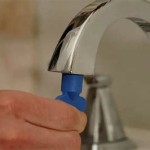How To Install a Bathroom Vent in a Metal Roof
Proper bathroom ventilation is crucial for maintaining a healthy and comfortable home environment. Excess moisture from showering, bathing, and even handwashing can lead to mold growth, mildew, structural damage, and poor indoor air quality. Installing a bathroom vent, particularly when dealing with a metal roof, requires careful planning, specific tools, and a thorough understanding of the process to ensure a watertight and functional installation.
Successfully installing a bathroom vent through a metal roof involves several key considerations. Unlike asphalt shingles, metal roofing presents unique challenges in terms of cutting, sealing, and preventing leaks. The type of metal (steel, aluminum, copper), the profile (standing seam, corrugated, ribbed), and the method of attachment (exposed fastener, concealed fastener) all influence the installation process. This article outlines a comprehensive guide to installing a bathroom vent through a metal roof, emphasizing safety, proper techniques, and best practices for achieving a professional and leak-proof result.
Key Point 1: Planning and Preparation for Installation
Before commencing any work, meticulously planning the installation is paramount. This involves selecting the appropriate vent type, determining the ideal location, gathering necessary tools and materials, and understanding local building codes.
The selection of the correct vent is crucial. Consider the bathroom's size, the frequency of use, and the climate. Ventilation fans are rated in cubic feet per minute (CFM), indicating the volume of air they can exhaust. A general guideline is to provide at least 1 CFM per square foot of bathroom area. For example, an 80-square-foot bathroom requires a fan rated at a minimum of 80 CFM. Furthermore, consider the fan's sone rating, which measures the noise level. Choose a fan with a low sone rating for quieter operation. For metal roofs, select a vent cap specifically designed for metal roofing profiles to ensure a proper seal. Many manufacturers offer vent caps with pre-formed bases that match common metal roofing shapes.
Location is another critical factor. Ideally, the vent should be positioned as close as possible to the source of moisture – typically, above the shower or bathtub. However, avoid placing the vent directly under vents or other obstructions on the roof that could redirect water flow onto the vent. Consider the attic layout and the routing of the exhaust duct to the exterior. The duct should be as straight and short as possible to maximize airflow efficiency. Avoid long, winding ducts, as these can significantly reduce the fan's effectiveness.
Gather all necessary tools and materials before starting the installation. This includes: * The selected bathroom vent fan and vent cap * Metal cutting tools (nibbler, aviation snips, metal cutting circular saw with appropriate blade) * Measuring tape * Pencil or marker * Drill with various drill bits * Screwdrivers (Phillips and flathead) * Sealant (specifically formulated for metal roofs, such as silicone or polyurethane sealant) * Butyl tape * Duct tape (foil tape is preferable) * Wiring materials (electrical wire, wire connectors, cable staples) * Safety glasses * Gloves * Ladder * Safety harness (if required for roof access) * Dust mask * Stud finder * Level * Flexible ductwork * Penetration flashing (if the vent cap doesn't have an integrated base)
Before commencing any work, consult local building codes and regulations regarding bathroom ventilation requirements. Some jurisdictions may require permits for installing ventilation systems. Ensuring compliance with all applicable codes is essential for a legal and safe installation.
Key Point 2: Cutting the Hole and Installing the Vent Cap
Cutting the hole in the metal roof requires precision and caution to avoid damaging the roofing material and creating a leak. The process varies slightly depending on the type of metal roofing.
Begin by accurately marking the location of the hole on the roof. Use the vent cap as a template to trace the outline of the opening. Double-check all measurements to ensure the hole is the correct size and shape for the vent cap. For standing seam roofs, it's often preferable to position the vent between the seams to avoid cutting through the raised seams. If cutting through a seam is unavoidable, ensure proper sealing around the cut edges.
Select the appropriate cutting tool based on the type and thickness of the metal roofing. A nibbler is a versatile tool for cutting intricate shapes in metal without creating sharp edges or excessive heat. Aviation snips are suitable for thinner gauge metal, but may be more challenging to use for larger openings. A metal-cutting circular saw with a specialized blade designed for metal is an option for straight cuts, but generates more heat and sparks. Always wear safety glasses and gloves when using any cutting tool.
When cutting, work slowly and carefully to avoid deforming the metal. For corrugated or ribbed metal roofing, follow the contours of the profile to maintain a consistent cut. After cutting the hole, remove any sharp edges or burrs with a file or deburring tool. Clean the area around the hole thoroughly to remove any metal shavings or debris.
The next step involves installing the vent cap. Apply a generous bead of sealant around the perimeter of the hole on the roof. Position the vent cap over the hole, ensuring it is aligned correctly and that the pre-formed base (if applicable) matches the profile of the metal roofing. Press the vent cap firmly against the roof surface to create a tight seal. Fasten the vent cap to the roof using appropriate screws or fasteners recommended by the manufacturer. If penetration flashing is used, slide it up under the roofing material above the vent and secure it to the roof deck. Overlap the flashing sufficiently to ensure watertightness. Use sealant under the flashing where it contacts the roofing material.
After installing the vent cap, apply a bead of sealant around the edges of the cap where it meets the roof. This provides an extra layer of protection against water infiltration. Ensure all screws or fasteners are properly sealed to prevent leaks. Inspect the installation carefully for any gaps or imperfections and address them immediately.
Key Point 3: Connecting the Ductwork and Wiring
Connecting the ductwork and wiring requires careful attention to detail to ensure proper ventilation and electrical safety. Incorrectly installed ductwork can reduce the fan's efficiency, while incorrect wiring can create a fire hazard.
Begin by connecting the flexible ductwork to the vent cap on the roof. Use duct tape (preferably foil tape) to securely attach the duct to the vent cap, ensuring an airtight seal. Avoid using standard cloth duct tape, as it can degrade over time. The duct should extend from the vent cap to the bathroom exhaust fan unit in the attic or ceiling cavity. Route the duct as directly as possible, minimizing bends and turns. Support the ductwork with straps or hangers to prevent sagging and maintain proper airflow.
Next, connect the ductwork to the exhaust fan unit. Again, use duct tape to create a secure, airtight seal. Ensure the duct is properly aligned with the fan's exhaust port. Consider insulating the ductwork, especially in colder climates, to prevent condensation from forming inside the duct. Condensation can lead to mold growth and reduce the fan's efficiency.
Before wiring the exhaust fan, turn off the power to the circuit at the breaker box. Use a voltage tester to confirm that the power is off. Follow the manufacturer's instructions for wiring the fan. Typically, the fan will have three wires: a hot wire (usually black), a neutral wire (usually white), and a ground wire (usually green or bare copper). Connect the wires from the fan to the corresponding wires in the electrical circuit using wire connectors. Ensure the connections are secure and properly insulated.
Secure the wiring to the fan housing and the surrounding structure using cable staples. This prevents the wires from being pulled or damaged. Double-check all wiring connections before restoring power to the circuit. After restoring power, test the fan to ensure it is working correctly. Listen for any unusual noises or vibrations. If the fan is not functioning properly, turn off the power and recheck the wiring and ductwork connections.
Finally, inspect the entire installation from both inside the bathroom and on the roof. Ensure all connections are secure, and all seams are properly sealed. Check for any signs of leaks around the vent cap and ductwork. Addressing any issues promptly will prevent future problems and ensure the longevity of the installation.

How To Install Vents In Metal Roofs

Bath Vent Install In Metal Roof Slow House Update 27

Bathroom Vent Through Metal Roof Greenbuildingadvisor

How To Install A Bathroom Roof Vent Family Handyman

Bath Vent Install In Metal Roof Slow House Update 27

Installing A Bathroom Fan Fine Homebuilding

How To Install A Bathroom Roof Vent

Roofivent El 6 10 Pi Ivent Eco Exhaust Vent For Metal Roofs Gray

Installing Bathroom Exhaust Fan

Maintenance Of This Range Hood Exhaust Vent Through The Roof Home Improvement Stack Exchange
Related Posts







